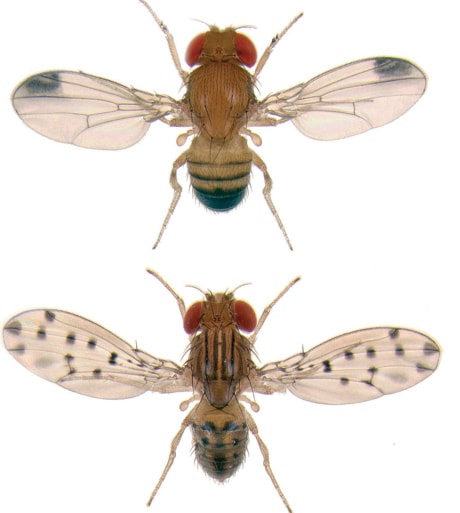The lowly fruit fly, or at least its nervous system, has inspired a better way to organize and operate computer networks, especially wireless sensor networks.
Ziv Bar-Joseph, a computational biologist at Carnegie Mellon University, was studying the fly when it struck him that its nervous system of hairlike structures that allow it to feel and see was not only doing what computer networks try to do but did it more simply.
A study by Bar-Joseph and five co-authors, published in the journal Science, reveals the fly’s nervous system as an efficient model for organizing numerous cells to operate in unison to accomplish prescribed tasks. The group used that knowledge to write a computer algorithm to operate more efficient computer networks.
When the fly’s nervous system develops, a minimal number of cells emerge as leaders that message neighboring cells not to become leaders. In time, each cell becomes attached to a leader that helps control the entire system without knowing how many cells it controls or even what the system is working to accomplish.
Computer networks use processors rather than cells. Inspired by the fruit fly, the team’s algorithm allows a minimal number of processors in a wireless computer network to emerge as leaders. Fewer leaders using one-bit messages make the entire system work more simply and efficiently.
The system has numerous potential applications including searching the Web, controlling airplanes in flight, or doing environmental monitoring, where sensors are dispersed in a lake or waterway.
CMU is already using the system to control swarms of tiny robots.
“It’s such a simple and intuitive solution. I can’t believe we did not think of this 25 years ago,” study co-author Noga Alon stated in a news release. He is a mathematician and computer scientist at Tel Aviv University and the Institute for Advanced Study in Princeton, N.J.
Dr. Bar-Joseph, of CMU’s Lane Center for Computational Biology in the School of Computer Science, said scientists had long used computational and mathematical models to analyze biological systems. “Here we’ve reversed the strategy, studying a biological system to solve a long-standing computer science problem.”
Until now, computer networks used probability to determine which processors would serve as leaders, usually based on how many connections each had with other processors.
The chance of any processor becoming a leader increases based on the number of its connections. Such systems work quickly but require lots of messaging and energy to operate.
Using the new system, Dr. Bar-Joseph said, sensors dropped from a plane to study volcanic activity can be organized by a minimal number of processors without requiring lots of energy or complicated messaging across the network.
